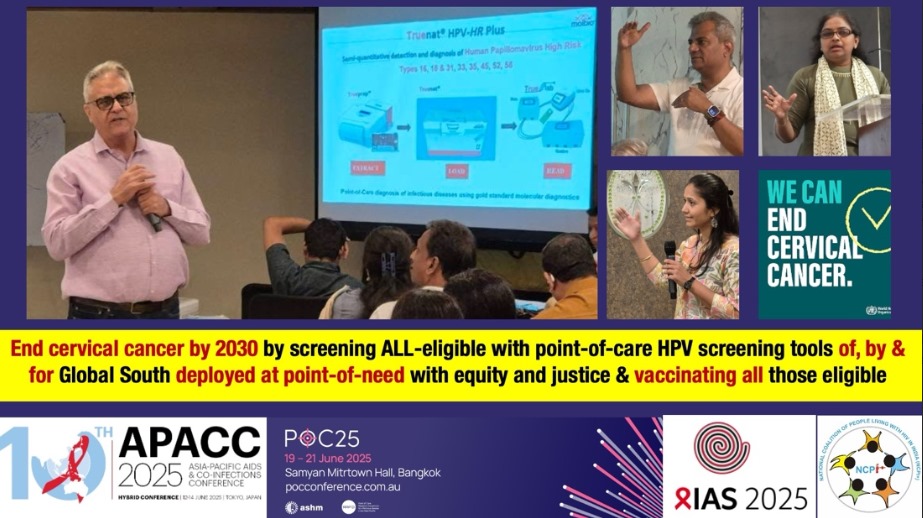Despite Being Preventable and Curable, Cervical Cancer Remains the 4th Biggest Cancer Among Women Worldwide
Cervical cancer, a largely preventable and curable disease if detected early and managed effectively, continues to be the fourth most common cancer affecting women globally. According to the World Health Organization (WHO), in 2022, approximately 660,000 women were diagnosed with cervical cancer worldwide, and 350,000 lost their lives to the disease.
The burden of cervical cancer is heavily concentrated in China, India, and Indonesia, with China and India accounting for nearly 42% of cases and 39% of deaths globally. India alone reported over 123,000 new cases and approximately 77,000 deaths in 2022, the highest mortality figure worldwide. This cancer disproportionately impacts younger women, and as a tragic consequence, 20% of children who lose their mother to cancer lose her to cervical cancer.
In 2018, WHO’s Director General called on governments worldwide to eliminate cervical cancer, with a global strategy endorsed in 2020 targeting elimination by 2030. However, progress remains slow, and the world is far from meeting this target as we approach 2025.
The highest cervical cancer incidence and mortality rates are seen in low- and middle-income countries, highlighting stark global health inequities. In 2022, 94% of cervical cancer deaths occurred in these regions, where access to critical health services like HPV vaccination, screening, and treatment remains severely limited.
Human papillomavirus (HPV) infection is the primary cause of cervical cancer. Vaccination against HPV and early detection through screening and treatment of pre-cancerous lesions are cost-effective measures to prevent the disease. Despite vaccines like Cervarix and Gardasil existing for nearly two decades, their rollout in the Global South has been inadequate.
In 2022, India’s Serum Institute, in partnership with the government’s Department of Biotechnology, developed Cervavac, the country’s first indigenous HPV vaccine. However, Cervavac is not yet part of India’s public health program, reflecting ongoing challenges in equitable vaccine access.
Screening efforts in many Global South countries have been hampered by outdated and less sensitive tests such as Pap smears and visual inspection with acetic acid (VIA). Advanced molecular HPV tests from the Global North offer better accuracy but remain inaccessible for many women in resource-limited and rural settings.
In a breakthrough, India developed its first indigenous point-of-care RT-PCR molecular HPV test—Truenat HPV-HR Plus. Validated by top Indian research institutions and WHO’s International Agency for Research on Cancer, this test detects 8 high-risk HPV genotypes responsible for over 96% of cervical cancer cases globally. It provides results within 60 minutes, allowing timely diagnosis and treatment—especially crucial for underserved populations.
More than 10,000 Truenat machines are already deployed worldwide, mostly in remote settings of the Global South, offering battery and solar-powered, lab-independent, rapid testing for multiple diseases including HPV.
Dr. Kuldeep Singh Sachdeva, former head of India’s national TB and HIV programs, emphasized the test’s high sensitivity and specificity and its potential to close screening gaps, particularly for women living with HIV, who are six times more likely to develop cervical cancer.
Women living with HIV are at increased risk of persistent HPV infection and cervical cancer. Organizations like the National Coalition of People living with HIV in India (NCPI Plus) are leading efforts to integrate cervical cancer screening into HIV care and raise awareness.
Daxa Patel, co-founder of NCPI Plus, highlighted the importance of community-led initiatives to improve screening and treatment access, while Pooja Mishra, NCPI Plus Secretary, called for increased health literacy among young people about this preventable and curable cancer.
Elimination means reducing cervical cancer incidence to fewer than 4 cases per 100,000 women through three key pillars:
- Vaccination: 90% of eligible young people fully vaccinated by age 15.
- Screening: 70% of women screened with high-performance tests by ages 35 and 45.
- Treatment: 90% of women with pre-cancer treated and 90% with invasive cancer managed.
WHO stresses that cervical cancer is the only cancer that can be fully eliminated through these measures. Early detection and management save lives.
HPV also causes cancers of the anus, penis, vagina, vulva, and oropharynx (throat). Studies show rising HPV-associated oropharyngeal cancers worldwide, including in India, urging expanded vaccination and prevention strategies for all genders.
The fight against cervical cancer is as much about health equity as it is about medicine. Indigenous innovations like India’s Truenat HPV-HR Plus and locally produced vaccines like Cervavac represent crucial steps toward affordable, accessible, and effective screening and prevention in the Global South.
As Dr. Rajesh S Gokhale, Secretary of India’s Department of Biotechnology, said, “Truenat HPV-HR Plus represents the kind of diagnostic innovation we need — dependable, scientifically rigorous, locally developed, and built to serve our public health system.”
Ending cervical cancer deaths means no woman should die from a preventable disease. The call is urgent: we must accelerate vaccination, improve access to cutting-edge screening, and ensure timely treatment to save millions of lives.



